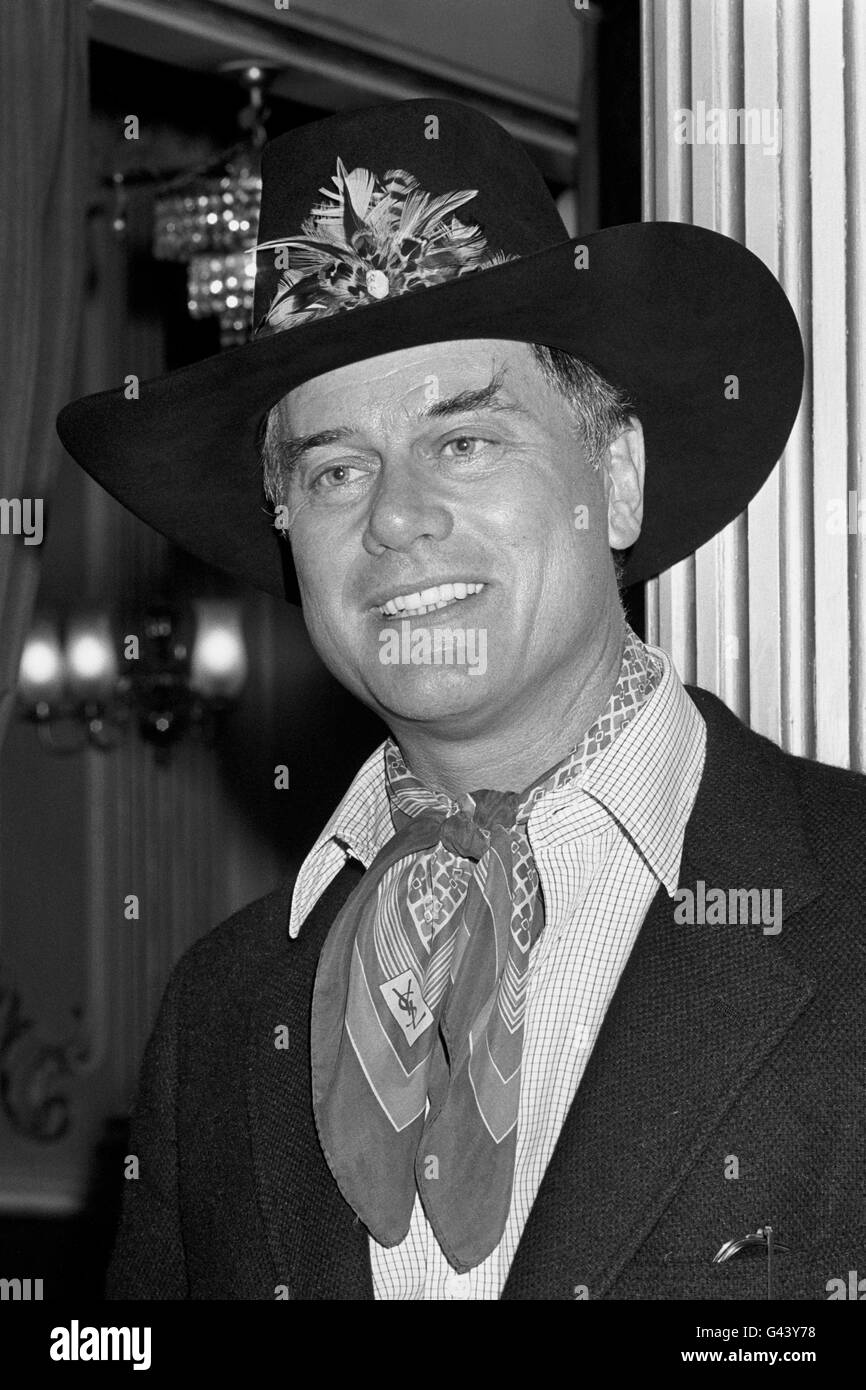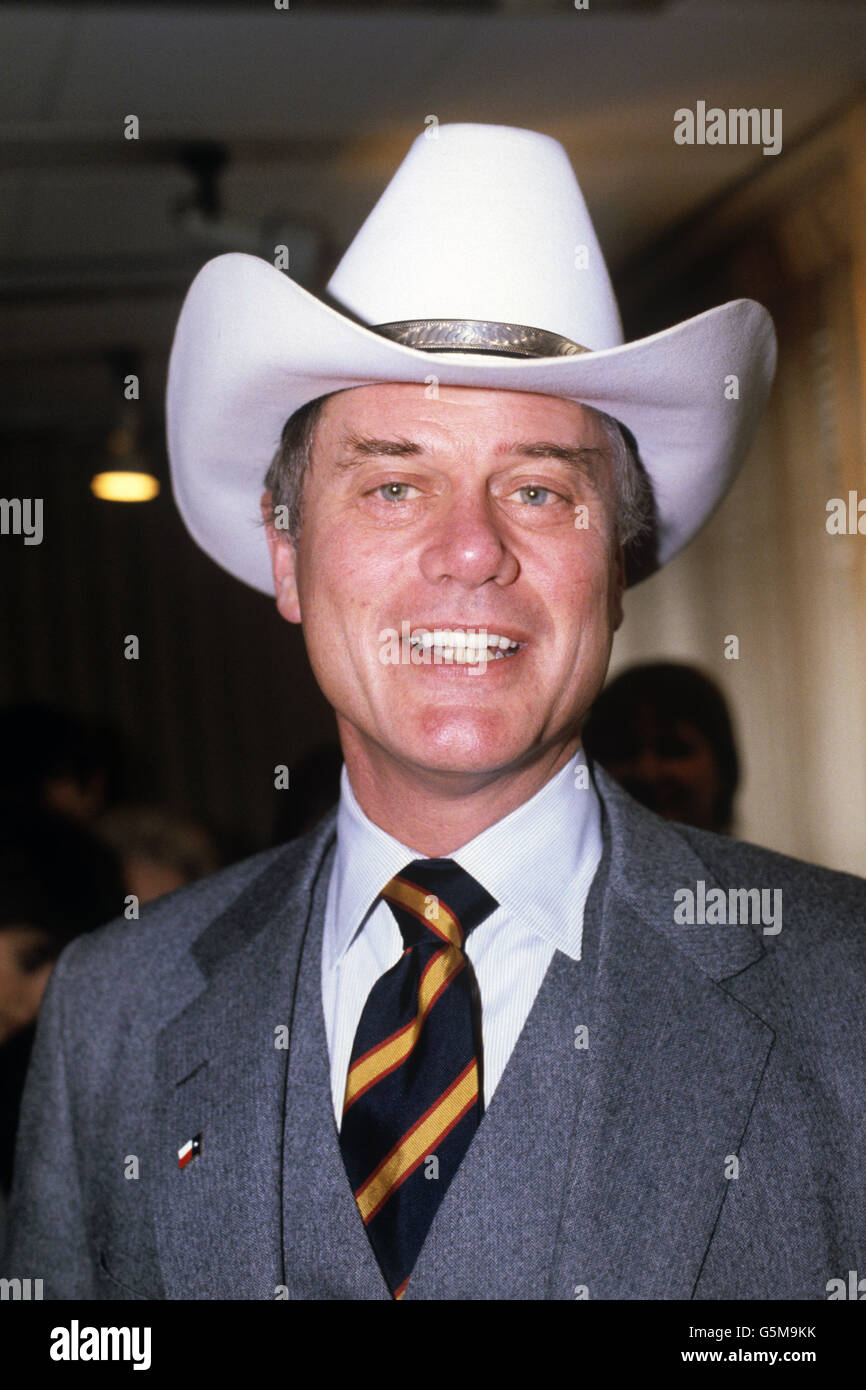For decades, the question "Who Shot J.R. Ewing?" has captivated audiences worldwide, becoming a cultural phenomenon that transcended the boundaries of television entertainment. This iconic cliffhanger from the hit TV series "Dallas" remains one of the most memorable moments in television history, sparking global speculation and debate. The mystery surrounding J.R. Ewing's shooting became a defining moment in television storytelling, showcasing the power of suspense and intrigue.
When the season finale aired in 1980, viewers were left stunned as J.R. Ewing, the cunning and ruthless oil tycoon, was shot by an unknown assailant. The dramatic scene sent shockwaves through the entertainment industry and became a topic of conversation everywhere from living rooms to boardrooms. The question "Who Shot J.R. Ewing?" became a household phrase, symbolizing the impact of television on popular culture.
This article delves deep into the mystery, exploring the events leading up to the shooting, the characters involved, and the eventual revelation. We'll also examine how this iconic moment changed the landscape of television storytelling and its lasting influence on modern entertainment.
Read also:Skinniest Person Alive Understanding The Life And Challenges
Table of Contents
- The Mystery Behind the Shooting
- Key Characters Involved
- Timeline of Events
- List of Suspects
- The Big Revelation
- Impact on Television
- Cultural Significance
- Legacy of the Cliffhanger
- Production Details
- Conclusion
The Mystery Behind the Shooting
The infamous question "Who Shot J.R. Ewing?" originated from the season finale of "Dallas" in 1980. The episode, titled "A House Divided," left viewers on the edge of their seats as J.R. Ewing, portrayed by Larry Hagman, was gunned down by an unseen assailant. The dramatic cliffhanger created a frenzy of speculation, with fans theorizing about potential suspects and motives.
The mystery was carefully crafted by the show's writers to maximize suspense and engagement. By withholding the identity of the shooter until the following season, the producers ensured that audiences would remain hooked and eagerly anticipate the resolution. This innovative storytelling technique set a new standard for television dramas and demonstrated the power of audience engagement.
Why Did This Cliffhanger Become So Iconic?
The cliffhanger's success can be attributed to several factors. First, J.R. Ewing was one of the most compelling and complex characters in television history. His Machiavellian schemes and manipulative tactics made him both a villain and a fan favorite. Second, the show's ensemble cast provided a rich array of potential suspects, each with their own motives and grudges against J.R. Finally, the timing of the cliffhanger, during the summer hiatus, amplified the anticipation and speculation.
Key Characters Involved
To fully understand the mystery of "Who Shot J.R. Ewing?", it's essential to examine the key characters involved in the storyline. Each character brought their own unique motivations and conflicts to the table, contributing to the suspense and intrigue.
Primary Characters
- J.R. Ewing: The cunning oil tycoon and central figure of the series.
- Sue Ellen Ewing: J.R.'s wife, whose troubled relationship with him added layers of complexity to the storyline.
- Pam Ewing: J.R.'s sister-in-law, whose marriage to Bobby Ewing created tension within the family.
- Cliff Barnes: J.R.'s arch-nemesis and business rival, with a long-standing grudge against the Ewings.
Timeline of Events
The events leading up to J.R.'s shooting were meticulously crafted to build suspense and intrigue. The storyline unfolded over several episodes, gradually revealing the motivations and actions of various characters. From J.R.'s manipulative schemes to the personal conflicts within the Ewing family, each plot point contributed to the growing tension.
Key Moments Leading to the Shooting
- J.R.'s business dealings and betrayals created enemies both inside and outside the family.
- Sue Ellen's struggle with alcoholism and her tumultuous relationship with J.R. added emotional depth to the storyline.
- Pam's discovery of a letter implicating J.R. in a conspiracy further complicated the family dynamics.
List of Suspects
The list of potential suspects was extensive, with each character having their own reasons for wanting to harm J.R. Ewing. The show's writers skillfully crafted motives for various characters, keeping audiences guessing until the very end.
Read also:Shawn Mendes Girlfriend A Deep Dive Into His Love Life And Relationships
Top Suspects
- Sue Ellen Ewing: Motivated by her tumultuous marriage and J.R.'s manipulative behavior.
- Cliff Barnes: Driven by his long-standing rivalry with J.R. and desire for revenge.
- Pam Ewing: Influenced by her discovery of J.R.'s involvement in a conspiracy.
- Kristin Shepard: A mysterious outsider with a hidden agenda and personal vendetta against J.R.
The Big Revelation
The answer to "Who Shot J.R. Ewing?" was finally revealed in the season premiere of "Dallas" in 1981. The episode, titled "Knots Untied," aired to record-breaking ratings and resolved the mystery that had captivated audiences for months. The revelation shocked viewers and became a defining moment in television history.
How Was the Mystery Resolved?
The shooter was revealed to be Kristin Shepard, a character introduced during the previous season. Her motive stemmed from a personal vendetta against J.R., fueled by his betrayal and manipulation. The revelation was met with mixed reactions from fans, but it successfully concluded one of television's greatest cliffhangers.
Impact on Television
The "Who Shot J.R. Ewing?" cliffhanger revolutionized television storytelling by demonstrating the power of suspense and audience engagement. It set a new standard for serialized dramas and influenced countless shows that followed. The success of this cliffhanger highlighted the importance of creating compelling storylines and maintaining viewer interest through innovative techniques.
How Did This Cliffhanger Change TV?
This iconic moment encouraged producers and writers to embrace more complex narratives and character development. It also emphasized the importance of timing and pacing in storytelling, ensuring that audiences remained engaged and invested in the unfolding drama. The success of "Dallas" paved the way for future television series to experiment with cliffhangers and multi-episode story arcs.
Cultural Significance
Beyond its impact on television, the "Who Shot J.R. Ewing?" cliffhanger became a cultural phenomenon that transcended the medium. The question itself became a symbol of popular culture, referenced in various forms of media and everyday conversation. It demonstrated the power of television to unite audiences and spark global discussions.
Why Did This Moment Resonate So Strongly?
The resonance of this moment can be attributed to its ability to tap into universal themes of intrigue, betrayal, and redemption. The complexity of the characters and their motivations made the storyline relatable and engaging for diverse audiences. Additionally, the widespread media coverage and speculation surrounding the mystery further amplified its cultural significance.
Legacy of the Cliffhanger
The legacy of "Who Shot J.R. Ewing?" continues to influence modern television storytelling. Shows today frequently employ cliffhangers and multi-episode arcs to maintain audience engagement and build suspense. The success of this iconic moment demonstrated the potential of television to create lasting impressions and cultural impact.
How Has This Moment Shaped Modern TV?
Modern television dramas often incorporate elements of suspense and mystery, drawing inspiration from the "Who Shot J.R. Ewing?" cliffhanger. The emphasis on character development and complex storylines has become a hallmark of successful series, reflecting the lessons learned from this groundbreaking moment in television history.
Production Details
The creation of the "Who Shot J.R. Ewing?" cliffhanger involved meticulous planning and execution by the show's writers and producers. The decision to withhold the shooter's identity until the following season was a calculated move to maximize suspense and engagement. The success of this strategy demonstrated the importance of innovative storytelling techniques in capturing audience attention.
Behind the Scenes
Behind the scenes, the production team worked tirelessly to ensure that the mystery was maintained until the final reveal. The writers crafted multiple storylines and potential suspects, keeping the cast and crew guessing until the last moment. This level of secrecy contributed to the authenticity and impact of the final revelation.
Conclusion
The question "Who Shot J.R. Ewing?" remains one of the most iconic moments in television history, showcasing the power of suspense and intrigue in storytelling. From its impact on television storytelling to its cultural significance, this cliffhanger revolutionized the medium and left a lasting legacy. The resolution of the mystery demonstrated the importance of character development and complex storytelling in captivating audiences.
We invite you to share your thoughts and theories about this legendary moment in television history. Leave a comment below or explore other articles on our site to discover more fascinating insights into the world of entertainment. Together, let's celebrate the enduring legacy of "Dallas" and its contribution to the art of television storytelling.


